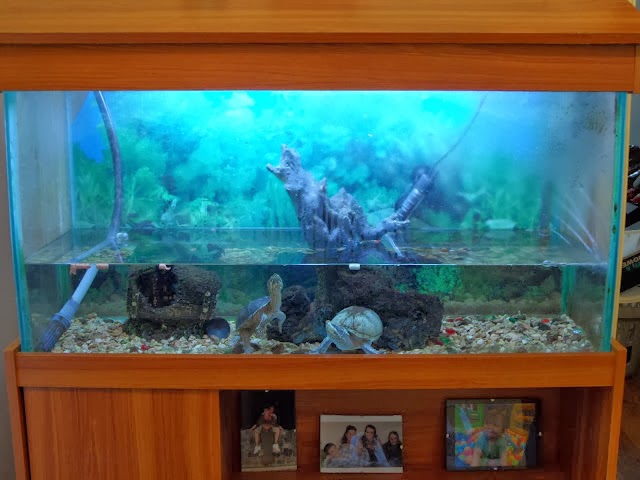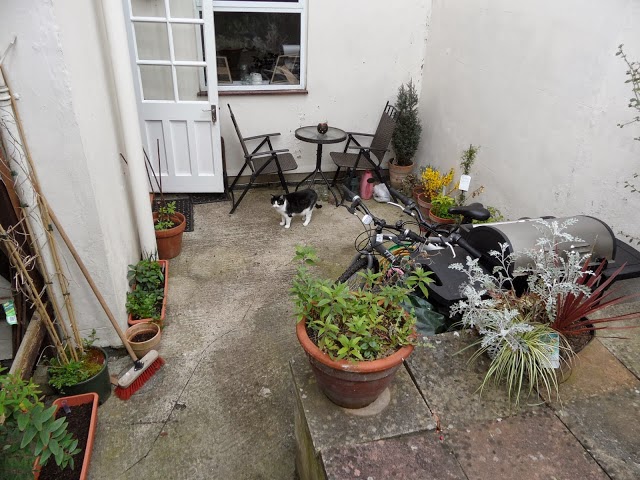Once you have found a place that accepts pets and is suitable for you and the animals, then you need to prepare your home for your new addition or make some preparations before you move your current pets in. Anyone getting a pet will need to do this but as a tenant there are some extra precautions you need to take:
- Make sure you have plenty of puppy pads or cat litter ready, or that they can easily get outside to go to the toilet if you’re letting them outside straight away. We've never had to litter train our cats so can’t comment on how easy or hard it is, but as a tenant it would be a good idea to get pets that are already house broken.
- Look around your current or prospective property for spots for things like litter trays, pet beds, food bowls etc. These ideally shouldn't all be in the same place, we keep the food and water in the kitchen, the litter tray in the dining room (not ideal but we scoot it out into the bathroom when we’re eating) and they never slept in the beds we got them (they prefer the sofa or our bed) so we don’t have one for them any more but if you had a dog or cats that would sleep in a bed a nice warm area not in a thoroughfare would be best.

- If you will have a tank, vivarium or cage look for the best place to set it up, on hard flooring is best as there will be inevitable drips or spills when cleaning and it’s easier to clean up from hard floors, a rug or mat underneath will also help protect the floor. As soon as we viewed our flat I knew the turtles would go in the hallway or the dining room as there is hard flooring for easier clean-up, it's near the bathroom for easier emptying and refilling and there just isn't the space in the living room (having them in the bedroom is a no no as they're nocturnal and make a lot of noise at night)

- Get into good habits from the start, if there are any areas that should be off limits (we keep our cats away from the hallway as they pee on the mat and we also don’t want them getting out the front door onto the busy road) then keep these areas off limits from the start, it helps to establish the rules if you are consistent. Before you get the animals think about how you can enforce any rules or block off areas you want them kept away from.
- If they do get into bad habits or behaviour like scratching door frames or going to the toilet where they shouldn't there are repellent sprays available to keep pets away from things you don’t want them near. We got ours from pet smart when the cats started pooing behind the turtle tank, they had never done this before at our last house but just after we moved in here the litter tray was near it and I think they just got it into their heads that behind the tank was included in their toilet area, I doused the back of the tank in cat repellent spray and now they don’t even go behind it let alone go behind it. I actually haven't had to re spray after it wore off, just the one time seemed enough to break the habit.
- If you do have a litter tray when setting it up just be aware that animals don’t always have the best aim or judgement, our cats sometimes go next to the tray (or right on the lip of the tray, because they like to be awkward) or kick the litter (and whatever is buried in it) out while digging in there. We now have a mat under the tray and it really helps catch anything that is kicked out or doesn't quite make it into the tray. We already have an XL tray but also have large cats that aren't very bright so the mat is our solution, but make sure you have a large enough tray and change the litter regularly. We find if the tray gets too messy our cats won’t use it and this is when we get problems with them going elsewhere. We change ours as needed, but having 2 cats sharing a tray it seems to be around every other day to every 3 days we change the entire tray and we scoop it in between.

- Make sure cats have a scratching post or mat, and dogs have plenty of chew toys and stimulation, especially if they are very young or are going to be left alone for any period of time. As you don’t want them scratching the door frames or chewing up the furniture.
- Letting animals in and out can be an issue in a rental, as you often can’t just put a hole in the door for a cat or dog flap. We used to leave a window open for the cats at our last house as it was a small window which we felt comfortable leaving open when we were out and it went into the spare room so the draught wasn’t an issue. During the winter we closed it and they just had to be in or out. However we found they got the window frame, window sill and the glass very dirty going over it constantly and we actually had to repaint under the window to cover where I had cleaned it so much the paint has started to wear off. Now we tend to leave the back door open when we’re home for them to come and go (as longs as it’s not too cold) and if we’re out or it’s raining or cold so we want to shut the door they just have to be in or out. We give them the option to come in and if they don’t then they stay outside. They seem to have gotten used to this pretty quickly. Think about how you will let cats or dogs in and out.

- Stock up on carpet cleaner before they arrive, puppies and kittens might have a few little accidents occasionally and a good spot cleaner can really save the carpet! Cats also throw up a lot and ours (especially Jazzie with her long hair) get furballs, so having a good spot cleaner to clear it up really helps. I then shampoo the whole carpet once in a while to really get any marks out.
- Sometimes what you think will work doesn't end up working so go with it and try to work around it. For example when we first moved in we thought it would be perfect for the litter tray to go in the hallway, it's not a room we would spend a lot of time in so private for them and we don't have to look at it or smell it all the time. However it turns out that if left unattended the cats will scratch up or pee on the doormat, because of the texture I think but also because cats are mean (joking of course, but they do wreck a lot of our stuff). Also we didn't want the chance of them getting out the front onto the busy road. So now the litter tray is in the dining room which isn't ideal.
I'm not a vet or an expert, but I've rented with and without pets, and have brought new pets into a rented home then also moved them from home to home. Those are my tips on moving to a new rented place with a new pet or an existing pet and how to minimise the stress for you, your pet and your landlord!
No comments:
Post a Comment